A recent visit to Church haven, on the West Coast of South Africa, reminded me of the beauty of strandveld in spring. These tough plants which grow on sand or limestone, and survive the harshest of coastal conditions, erupt into a riot of flowers and colour. It is a sight to behold.
If you are looking for water-wise plants which will survive long dry summers, harsh windy conditions and poor sandy soils, this is just the palette for you! Not many of these plants are available (yet) – but with growing interest and demand from the public this can change. My dream is that every region has its local nursery, stocked with local indigenous species, grown by locals. Wouldn’t it be nice if there were some nurseries along the West Coast which stocked this Strandveld Palette and these plants were widely grown in all the sea side towns (Langebaan, Paternoster, Saldanah, Lambertsbaai) – instead of the ubiquitous palm trees and Manitoka?
This Kankerbossie (Cancer bush, Lessertia frutescens) is just one of many attractive species, not only ornamental but with medicinal properties. It is a weedy type, preferring disturbed areas, like roadsides, and seeding itself freely. Fast-growing and flowers prolifically with red pea flowers, which are followed by unusual balloon-like seed pods.
Kattekruid (Ballota africana) looks like it would fit right into a cottage garden – yet growing here under tough coastal conditions. It is a well-known Khoi remedy: an infusion of the leaves was used to treat a variety of ailments including fever, flu, asthma, stress and thrush.
Spinnekopblom (Ferraria crispa). This is a classic fly-pollinated flower – purplish black with an unpleasant scent – designed to attract carrion flies. I noticed the flowers only last a day, and they don’t smell nearly as strong as Hoodias and Stapelias – it would make the most unusual garden jewel!
Melkbos (Euphorbia mauritanica) is available in the trade, and gives a lovely vertical texture to a Strandveld planting, with its upright succulent stems. The lime-yellow flowers in spring are an added bonus.
I couldn’t get enough of the sweet tasty berries of the Bietou (Osteospermum moniliferum) – delicious! Neither could the birds…
Zygophyllum morgsana looking pretty with seed pods blushed red. I have hardly seen this plant in cultivation – apparently difficult to propagate.
The Beach Sage or Strandsalie (Salvia africana-lutea) – now this is a popular landscape plant which is widely available. I love the pale orange to russet flowers, which attract sunbirds. Each flower has a maroon calyx which remains on the bush for months afterwards, and the geometrically arranged aromatic grey leaves are distinctive.
No Strandveld garden would be complete without Sour fig – Carpobrotus species. An excellent pioneer for open areas, to stabilise sand or to cover an embankment. The juicy fruits are a favourite among locals.
Another favourite, and widely available landscape plant – Wild Rosemary. Actually this coastal species, Eriocephalus racemosus, is less widely known and sold than it’s inland counterpart, Eriocephalus africanus. Wonderfully fragrant: use it like rosemary to flavour food. Recently I added it to sliced mushrooms while I was frying them – couldn’t get enough it, we had it 3 days in a row!

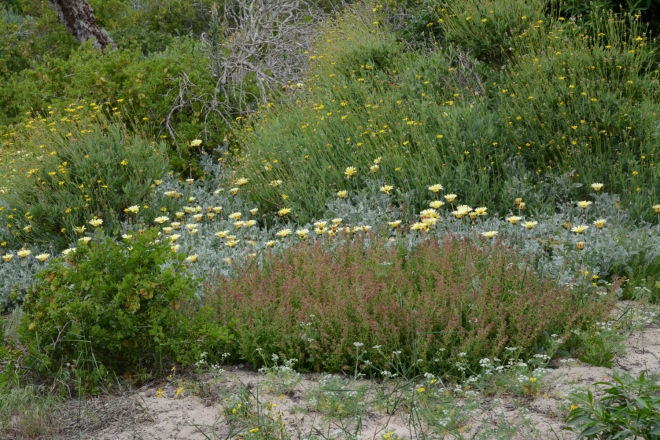
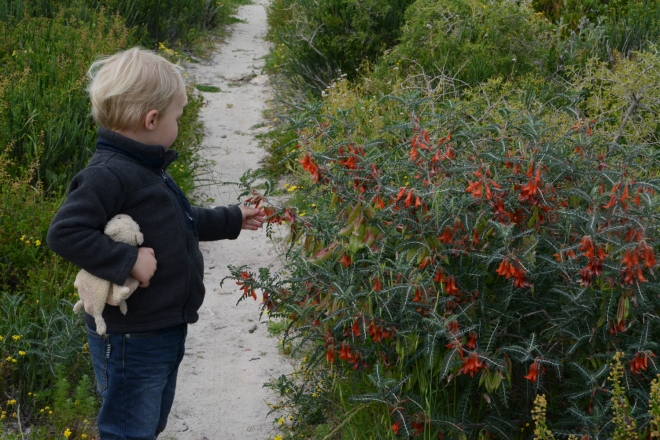
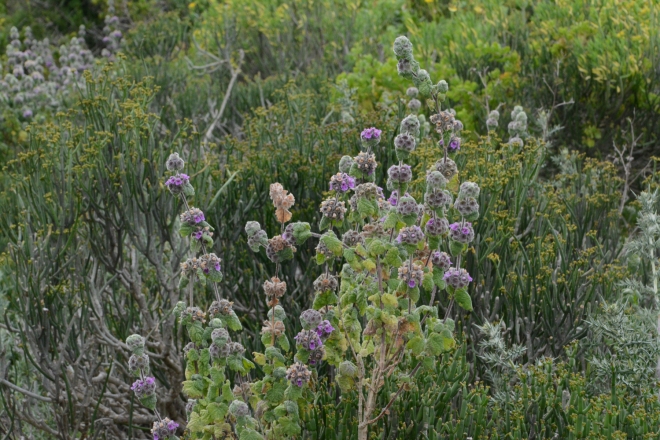
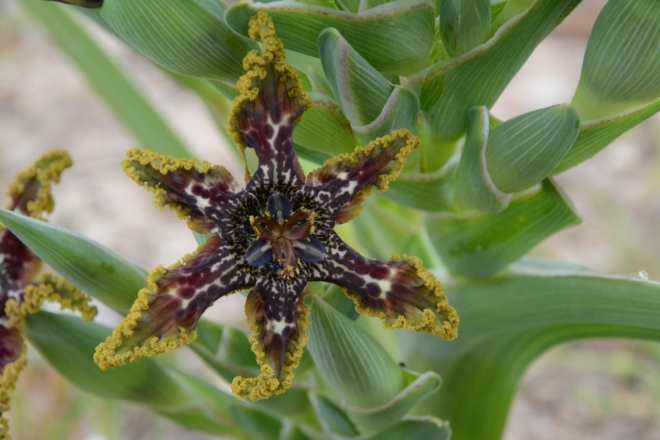



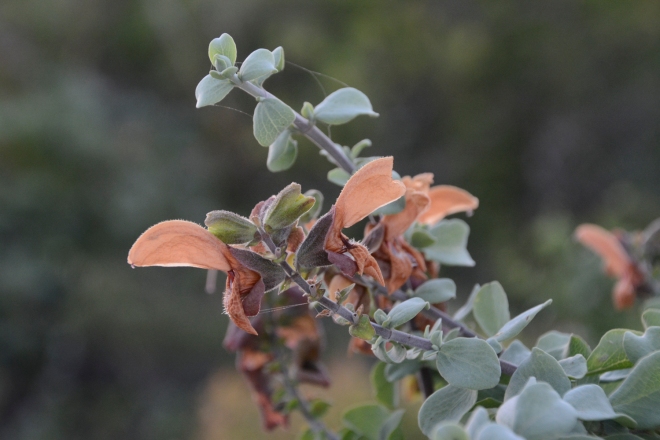
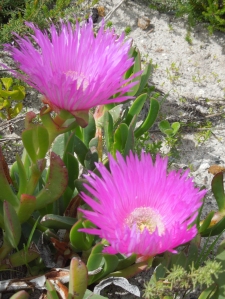

Oh! So happy to know that Strandsalie will flower and attract sunbirds! Planted a sixpack in the autumn and they are spreading very nicely…
LikeLiked by 1 person
So glad you decided to blog again! I need more SA plant fixes than Marie’s annual pilgrimage can supply 🙂 I remember Lessertia form our trip and think I’ve seen it in a few US botanic gardens as a pot crop. Do you think it would get big enough to set that awesome seed in a normal garden setting if given a head start in a greenhouse?
We saw lots of trees with seed pods similar to your Zygophyllum pic near Kruger. I loved those seeds some of which were much redder and showier than others. Is there a tree version of Zygophyllum or some evolutionary benefit to that seed shape or…?
Your idea of regional nurseries full of regional plants makes me happy…and want to move 🙂
LikeLike
Hi Paul – sorry about this belated reply. My first time in a while without my toddler son…you will know what I mean! The Lessertia is a weedy pioneer species here – I have no personal experience of growing it. Certainly worth a try. I would not pamper it too much though – sandy well-drained soil (it grow on dune sand here and road verges, also on heavier soils) but periods of dryness would apply.
Those trees in the Kruger would be Combretums – they have lovely papery winged pods. Adapted for wind dispersal, would be my guess?
Please make contact when you’re next in CT – would be lovely to see you.
LikeLike
I do hope we’ll make it back and I’ll be certain to reach out if we do. Four years later, I can clearly picture many of the places we visited. You live in a magical part of the world! Thanks for the tips on Lessertia. Re your book…will Kalahari ship to the U.S.?
LikeLike
Hi Paul – yes, my publisher says Kalahari does ship worldwide. Let me know if you get stuck, and I’ll make a plan to send you a copy.
LikeLike